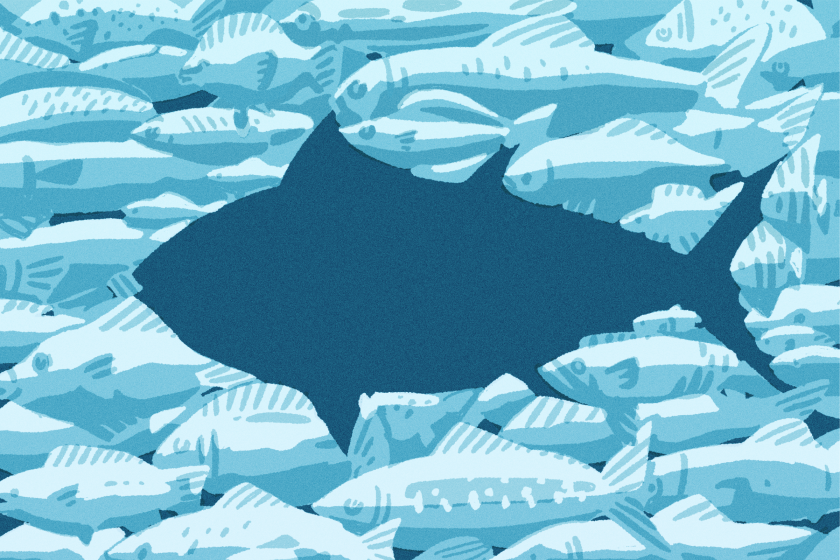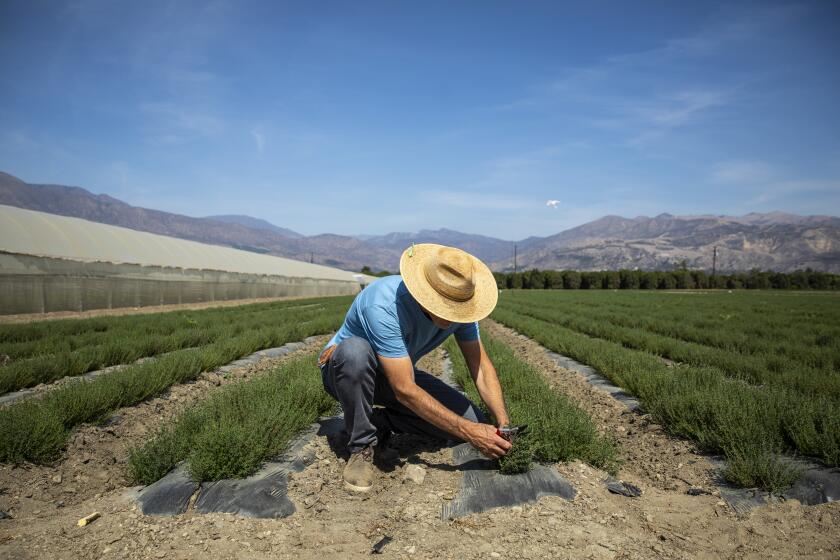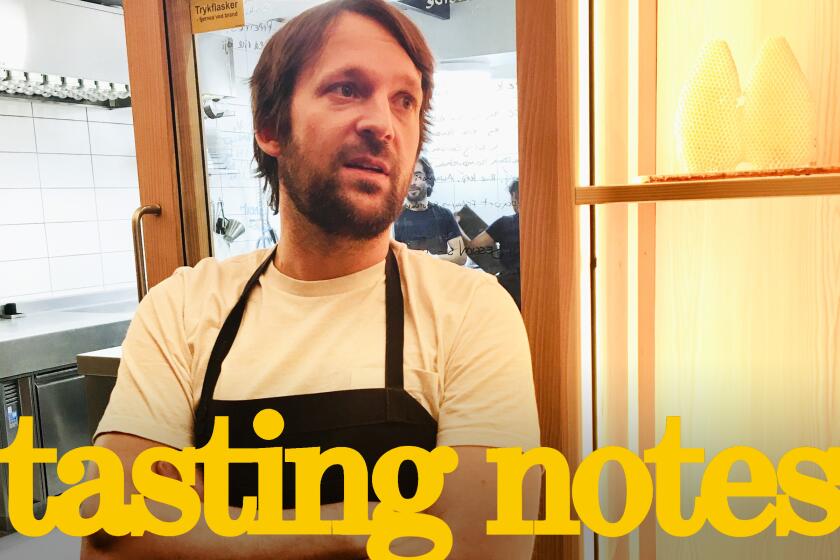Q&A: Noma chef René Redzepi wants to make insects delicious. In ‘Omnivore,’ he explains why

- Share via
Earning three Michelin stars and having your restaurant named the best in the world five times might be enough for most chefs, but René Redzepi has set his sights on something bigger: changing the way we eat.
The fare we take for granted today is at risk on multiple fronts. Climate change threatens all kinds of crops, including the most popular food in the world. Mass production by agribusinesses is marring the environment, while monoculture farming practices are giving deadly pathogens a biological edge. Underlying all these challenges is the persistent pressure to feed an ever-growing global population.
None of this was on Redzepi’s mind when he followed his best friend to culinary school at age 15. He quickly found his purpose, cooking in multiple Michelin-starred restaurants before opening Noma in his native Copenhagen in 2003.
In the 21 years since, one thing has become abundantly clear.
“There’s something happening with our environment,” Redzepi said, “and how we produce and grow our food has a huge impact.”
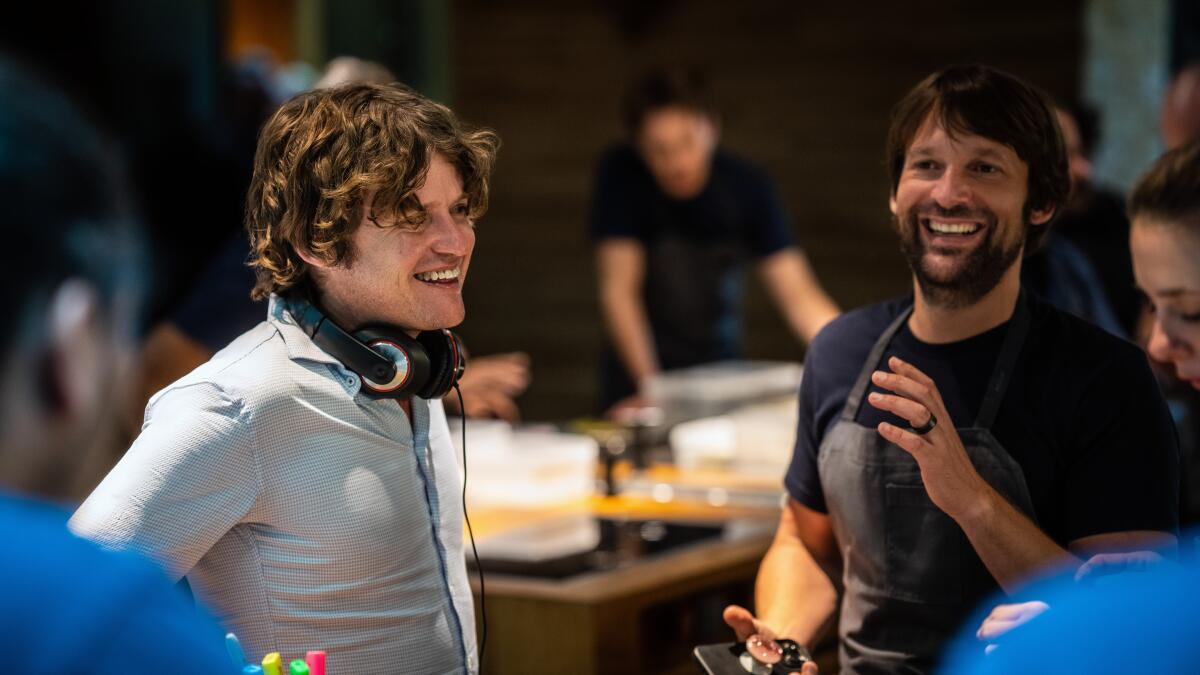
That’s the starting point for “Omnivore,” which debuts on AppleTV+ on Friday. Created with his “old pal” Matt Goulding, a food writer and three-time James Beard Award winner, the documentary series raises big questions about the future of food by going deep on eight ingredients: chiles, bluefin tuna, salt, bananas, pork, rice, coffee and corn.
Redzepi and Goulding spoke with The Times about their new show and what they learned about sustainability while making it. This interview has been edited for length and clarity.
How did “Omnivore” come about?
René Redzepi: Noma was exploding, and I was being offered all sorts of opportunities. I never had the desire to be on TV unless we were informing the world about how magical and important and delicious food is in a way that would be more like “Planet Earth” than a cooking show or travel show.
It was always on the back burner. Then COVID happens.

Matt Goulding: When René called, it all fell into place. His voice always had that kind of David Attenborough echo to it.
Of course we want to make food delicious and enjoyable, but we also want to understand what it means — not just political or cultural but also the natural world, the biological. All of those elements felt like they could be connected through the vessel of the ingredient.
How did you pick the ingredients?
MG: We thought about this like a recipe. What are some of the fundamental ingredients you would put at the heart of a recipe — the protein or the carb — and what are the seasonings? That’s why we have an episode on chile peppers. They don’t have an essential role in our survival, but they have an essential role in explaining the human psyche.
RR: For me, we need wheat to stay alive, but we need chile to feel alive.
There’s a lot riding on Americans’ food choices, including trillions of dollars in spending and our collective risk of developing a slew of chronic diseases. A new survey shows what we want to eat, and why.
You highlight traditional milpa farmers in the Yucatan and organic rice growers in India. If techniques like theirs were widely adopted, would we be able to feed everyone?
RR: We need large-scale agriculture to be inspired by traditional ways that have been used for thousands of years. At the same time, you need those ancient ways to adopt some technology that can actually help things move forward.
MG: It’s a question at the heart of the series, and the episode on corn is where we address this most directly. It’s built around the idea of a tale of two corns. One is a giant monoculture Iowa farm, and the other is the milpa, this polyculture system that was the way corn was grown during its rise in Mesoamerica.
What attracted us to the milpa was not just this romantic ideal of ancient wisdom. When you look at studies, you’ll find that polycultures can produce more calories per acre than a monoculture can.
Monocultures work on a one-dimensional plane — they just use surface area. With polyculture, you’re using a three-dimensional space to create more food. There’s the crawling vines of the beans, the cover crop of the squash grown below, and the shade being produced by the cornstalks.
The more people followed environmentally sustainable diets that emphasized nutrients from plants, the lower their risk of death from cancer, heart disease, Alzheimer’s disease and a variety of other causes, a new study finds.
The peril of climate change is seen most acutely in the episode about rice. Farmers are so dependent on monsoons, and they’re not behaving as they were in the past.
MG: This single ingredient represents about 20% of the human diet. Figuring out how to continue to grow rice amid this incredible change in our climate is one of the most confounding problems of the 21st century.
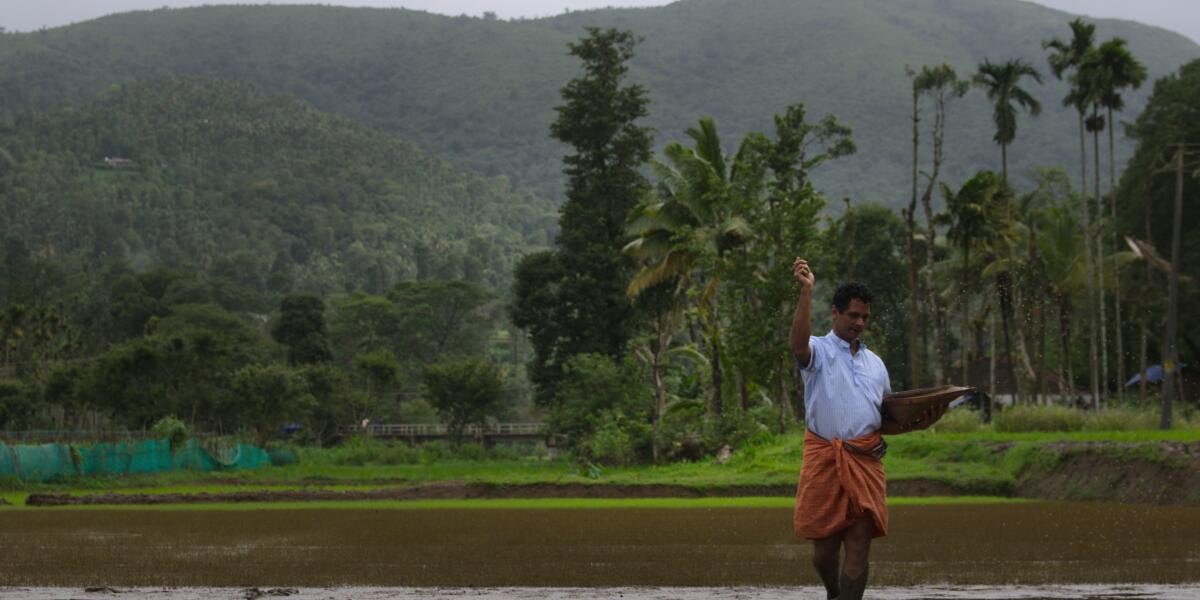
We found JK, a southern Indian rice farmer who was just trying to grow rice for his community. He discovered that all these incredible varieties of rice that he grew up with were disappearing, so he took it upon himself to look for them. Maybe one of them will adapt better to the changing climate.
RR: Perhaps if we ate more different things, that would also be something that could help. Could we eat more seaweed? Could we eat more mushrooms? Could we eat more legumes? What about bugs? These things have the potential to be mini-staples.
Could we eat more seaweed? Could we eat more mushrooms? Could we eat more legumes? What about bugs?
— René Redzepi, founder and head chef of Noma
Throughout the series, you show how much humans have literally changed the landscape in pursuit of a good bite to eat. Is this necessarily bad?
MG: Food has always been at the sharp end of the globalization spear. It’s been driving a globalized world since the Age of Discovery, looking for spices, trading salts along the Silk Road.
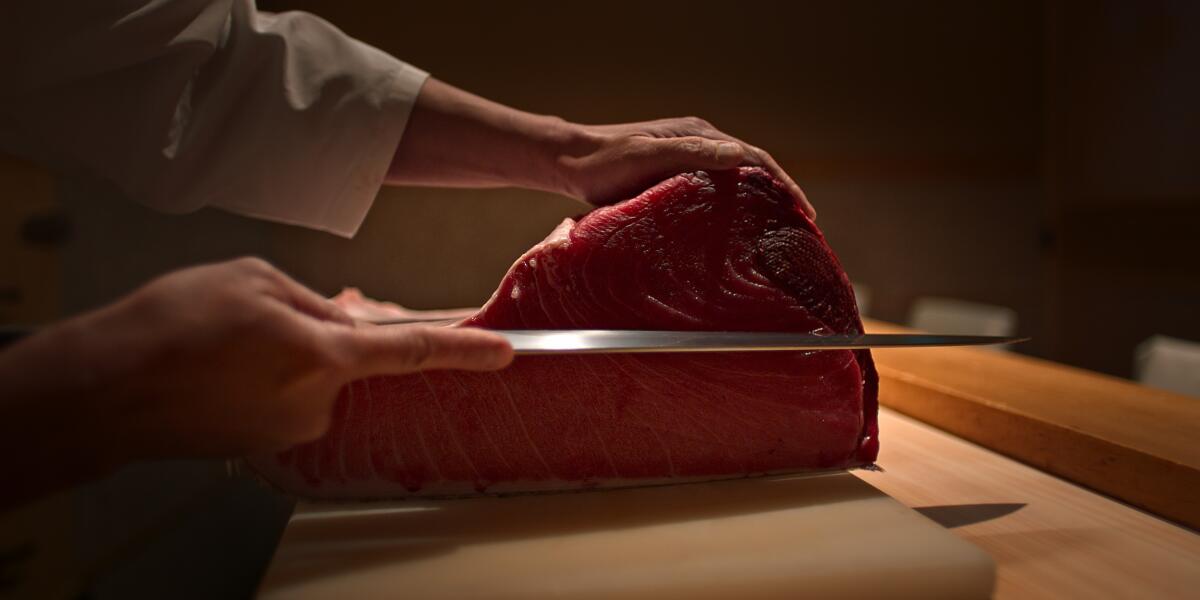
Bluefin tuna is a very potent example. What had been a trash fish for the better part of the 20th century could suddenly transform into one of the most sought-after ingredients through the innovation of this one individual at Japan Airlines.
Is this necessarily bad? I don’t think it has to be. There are good ways to do it and there are bad ways to do it. It’s a tough thing to draw a line in the sand.
Served nearly everywhere to sushi lovers, whether or not we should be eating bluefin tuna still is still hotly debated among consumers and conservation experts alike.
You seem to have a love/hate relationship with global markets. They make it possible for premium coffee growers in Rwanda to be paid fairly for their labor-intensive work, but they also allow the United Fruit Company to take over big chunks of Latin America to grow bananas.
MG: The United Fruit Company is the classic example of a system that controls all means of production so you can maximize efficiency and profit and get a product around the world. The only thing they didn’t factor in is that you can’t control nature in the long run. This is what we’re seeing with Panama disease and bananas.
That a banana costs one-fifth of the cost of an apple grown right down the road from you is one of the most confounding things about our food system. But the true cost of that banana — to the workforce, the consumer and the planet — is definitely much greater.
RR: If we can just make people aware that this is how food works, and make you think about what sort of systems you tap into, that will be powerful. Most people probably have no clue.
MG: When we eat, when we drink, we are voting for some world we want to live in. It’s an incredibly empowering thing to be able to do three times a day.
When conventional farms are bordered by organic crops, conventional growers use more pesticide to keep insects at bay, study says.
Did you learn anything while making “Omnivore” that changed the way you do things at Noma?
RR: When we go into Noma 3.0 next year, we will cease to operate as a 12-months-of-the-year restaurant and focus a lot of our attention and skills and team on tackling bigger questions in the food space. One of the projects I’m looking into is this thing that we call Future Staples of Food, which was inspired by a lot of the research we’ve done. I mentioned some of them before — the seaweeds, the mushrooms, legumes and so on.
What about insects?
RR: For sure. It’s definitely a superfood. It’s unbelievable the amount of calories and nutrition you get. It’s mind-blowing.
But to change habits and have more things in our diet, we need to make them utterly delicious so that people choose them. Deliciousness is the change factor.
There’s been a lot of talk about the unsustainable nature of fine dining.


